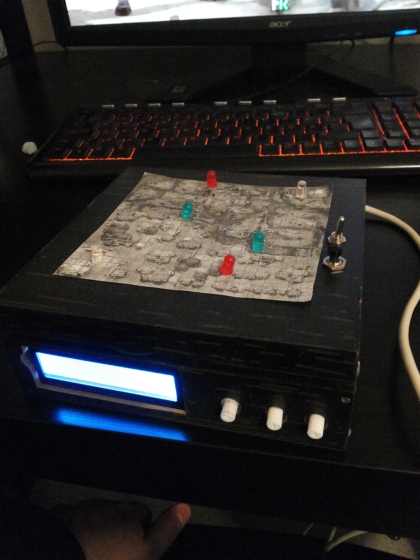Around two weeks ago I wrote a post about ideas for my Arduino project to be done for my prototyping course held by Tero Karvinen. I agreed to do this project with Péter Takács and we decided our project to be the Dota 2 Timer, considering the time and resources we had.

The final prototype in a nutshell
Understanding this prototype requires understanding some of the basics in the game itself. For new players its not so easy to keep tracks of things that might be happening around the map while playing a match. This timer is used to help the player understand more concretely some basic timing of the game. It could also be a nice addition to LAN parties – if not payed attention to, it blinks leds every now and then anyway.
- The timer is a box with 6 leds, an on/off switch and a pushbutton on top of it. On the side of the box there is a lcd screen and three potentiometers. There are also 2 holes in the back of the box for the usb and dc – cable.
- The LCD shows the time in minutes:seconds since reset (flicking the on/off -switch) working as a timer to go on with the game.
- At particular times the LCD prints out things that should be noted and flashing the leds on top of the box accordingly these prints are.
-
- Rune (every 2 minutes) – blue leds are lit.
- Creeps in the jungle (every minute and also at 0:30 mark) – red leds are lit.
- Catapult (every 3 minutes 30 seconds). – white leds are lit.
- Courier (at 3 minute mark) – no leds light up.
- When the pushbutton on top of the box is pressed, the lcd takes the time at that moment, adds 8 minutes to it and prints it on the lower line. This helps player to keep track on how Roshan respawns.
Continue reading Dota 2 Timer – From Ideas to a Finished Project



